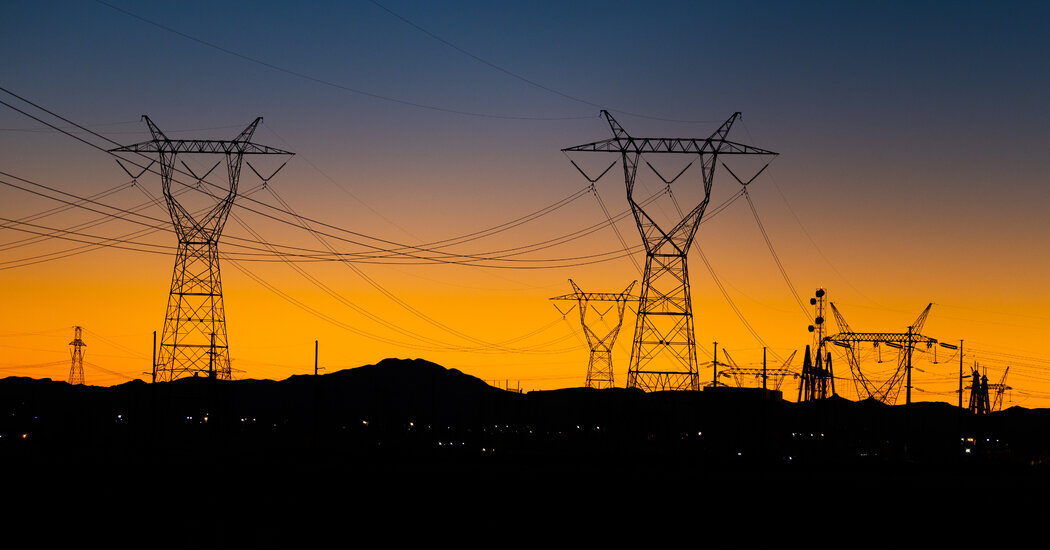The Biden administration has expressed growing alarm that efforts to fight climate change could falter unless the electric grids are quickly expanded.
The Biden administration on Thursday finalized a rule meant to speed up federal permits for major transmission lines, part of a broader push to expand America’s electric grids.
Administration officials are increasingly worried that their plans to fight climate change could falter unless the nation can quickly add vast amounts of grid capacity to handle more wind and solar power and to better tolerate extreme weather. The pace of construction for high-voltage power lines has sharply slowed since 2013, and building new lines can take a decade or more because of permitting delays and local opposition.
The Energy Department is trying to use the limited tools at its disposal to pour roughly $20 billion into grid upgrades and to streamline approvals for new lines. But experts say a rapid, large-scale grid expansion may ultimately depend on Congress.
Under the rule announced on Thursday, the Energy Department would take over as the lead agency in charge of federal environmental reviews for certain interstate power lines and would aim to issue necessary permits within two years. Currently, the federal approval process can take four years or more and often involves multiple agencies each conducting their own separate reviews.
“We need to build new transmission projects more quickly, as everybody knows,” Energy Secretary Jennifer Granholm said. The new reforms are “a huge improvement from the status quo, where developers routinely have to navigate several independent permitting processes throughout the federal government.”
The permitting changes would only affect lines that require federal review, like those that cross federally owned land. Such projects made up 26 percent of all transmission line miles added between 2010 and 2020. To qualify, developers would need to create a plan to engage with the public much earlier in the process.
